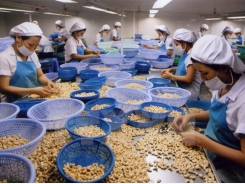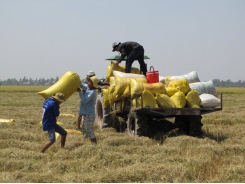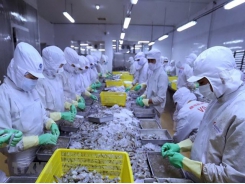At the time of ATIGA, sugarcane is still struggling

After a 2-year delay, from January 1, 2020, quotas on sugar imports from ASEAN will officially be removed and have an import tax rate of 0% in accordance with the commitments of the ASEAN Trade in Goods Agreement (ATIGA). However, Vietnam's sugar industry is not really ready.
The Sugar Association recommends importing raw sugar to refine and applying import licenses to monitor the import volume in order to ensure supply and demand at certain times.
Productivity
Under ATIGA, Vietnam was required to abolish tariff quotas on imported sugar from ASEAN from January 1, 2018. However, given the difficulties of the sugar industry, the Ministry of Industry and Trade asked the Government to postpone the implementation of ATIGA commitments for 2 years so sugar companies and farmers could have more time to adapt.
At present, the end of delay is fast approaching. The question is that after such a long time, are both enterprises and farmers in the sugar industry really prepared for the changes?
According to Mr. Pham Quoc Doanh, Chairman of the Vietnam Sugarcane Association, the sugar factories have prepared but the whole industry still faces some challenges. Over the past 2 years, the sugar industry's productivity has been lower than the world average, and lower than Asia. Sugarcane prices in Vietnam were still high due to low productivity.
Explaining the delay of the sugar industry, Mr. Doanh analyzed: All policies must be delayed. Up to 75-80% of sugar prices depend on sugarcane prices. We want to lower the price of sugar, so the price of sugarcane must drop. If we want to lower the price of sugarcane, production costs must be reduced and productivity must be improved. Production costs can be reduced through inputs, materials and labor. Thus, reducing costs will not happen “overnight”. “For example, when we want to reduce labor costs from land preparation, sugarcane care and harvesting, we have to mechanize, have fields and machines. Meanwhile, the average area of Vietnamese fields is only 0.3ha-0.5ha/household, it takes time to accumulate and exchange plots into large fields to apply mechanization. It is impossible for the farmers to do in 1 year or 2 years. There needs to be help from the State, and local authorities,” Mr. Doanh said.
From the perspective of increasing sugarcane productivity, Mr. Doanh stated: Increasing productivity depended on sugarcane varieties, cultivation methods as well as intensive farming processes. For example, if sugarcane cultivation used applied the irrigation method, the productivity would be high. When irrigated, the productivity of sugarcane would increase by 15-20%, but it was necessary to invest in reservoirs, watering systems, pumps. These things also needed time and cost.
Accept a heavy price
A more thorough analysis of the date of January 1, 2020 when the tariff quota on sugar imports will be abolished and the import tax rate reduced to 0%, Mr. Doanh assessed: When the door is opened fully, the factories which have prepared materials, have changed business management, diversified their products will face difficulties but still survive. However, about one-third, even half of the existing factories that have not adapted yet would face great difficulties. “Integration is an irresistible process, we must accept and adapt to the market mechanism. The sugar industry will also have to pay the heavy price, which is unavoidable,” Mr. Doanh said.
"Right now, the Sugarcane Association has to monitor the situation of sugar imports, the impact of sugar imports and the situation of smuggled sugar to the domestic sugar industry. In particular, in 2020, the Association will also monitor closely so that by the end of 2020, it is possible to know the information of import volume, import price, the level of influence on domestic sugarcane production, from which, there will be appropriate recommendations on defense measures. When we open fully, the imports cause serious impacts on the domestic production, the Government must take defensive measures, for example, the case of fertilizers and steel,” Mr. Doanh said.
In order to improve competitiveness in the context of integration, especially after ATIGA comes into effect in 2020, the Sugar Association proposed to restructure sugarcane material production to reduce production costs and lower prices of sugarcane materials for farmers to have profit; at the same time, restructure the sugar processing industry in the direction of diversifying products, forming a product value chain in order to reduce production costs, and product prices, and be able to compete; strive for sugar price below 10,000 VND per kg.
Mr. Doanh also said that the Sugar Association recommended the Ministry of Industry and Trade to consider and submit to the Prime Minister some measures to cope with the elimination of tariff quotas on sugar products under ATIGA. Specifically, only import raw sugar to refine and apply the import license to monitor the import volume to ensure the adjustment of supply and demand at certain times; stop bidding for the right to use sugar import quotas for 2019; monitor regularly and update the situation of importing sugar of different types after ATIGA takes effect; If the negative impact seriously affected domestic sugar production, the Ministry of Industry and Trade should propose defense or anti-dumping measures under the Foreign Trade Management Law.
For the Ministry of Finance, the Sugar Association proposed to consider submitting to the National Assembly for adjustment and supplementation of Special Consumption Tax with liquid sugar (HFCS) with a tax rate of 12%. Currently, liquid sugar was not applying tariff quotas and the applicable tax rates are 0% in ASEAN countries; allow to account costs for supporting factories, developing material areas for farmers into production costs, product costs to improve competitiveness.
By March 15, 36/36 sugar mills have entered production, pressed nearly 8 million tons of sugarcane, producing 750,000 tons of sugar of all kinds. Notably, the sugar consumption situation is very slow due to big inventory of the previous crop. Both previous inventory and current inventory are about 75%. Sugar prices have improved but still been at low levels, popular selling price of white sugar RS is about 10,500 VND/kg.
Related news
Tools

Phối trộn thức ăn chăn nuôi

Pha dung dịch thủy canh

Định mức cho tôm ăn

Phối trộn phân bón NPK

Xác định tỷ lệ tôm sống

Chuyển đổi đơn vị phân bón

Xác định công suất sục khí

Chuyển đổi đơn vị tôm

Tính diện tích nhà kính

Tính thể tích ao




 Fruit and vegetable exports decline during first quarter
Fruit and vegetable exports decline during first quarter  Global economic integration helps Vietnam expand agri-products markets
Global economic integration helps Vietnam expand agri-products markets